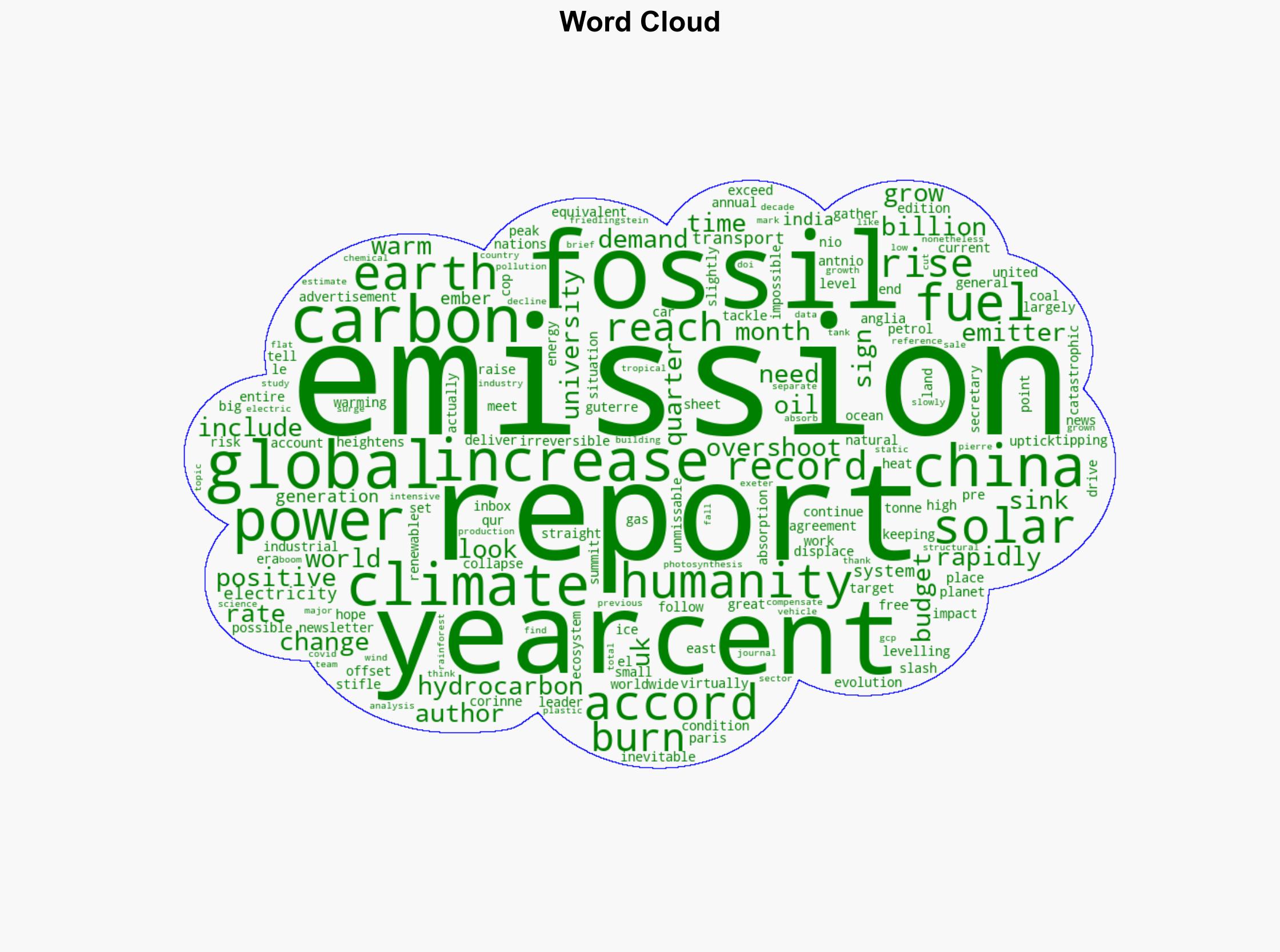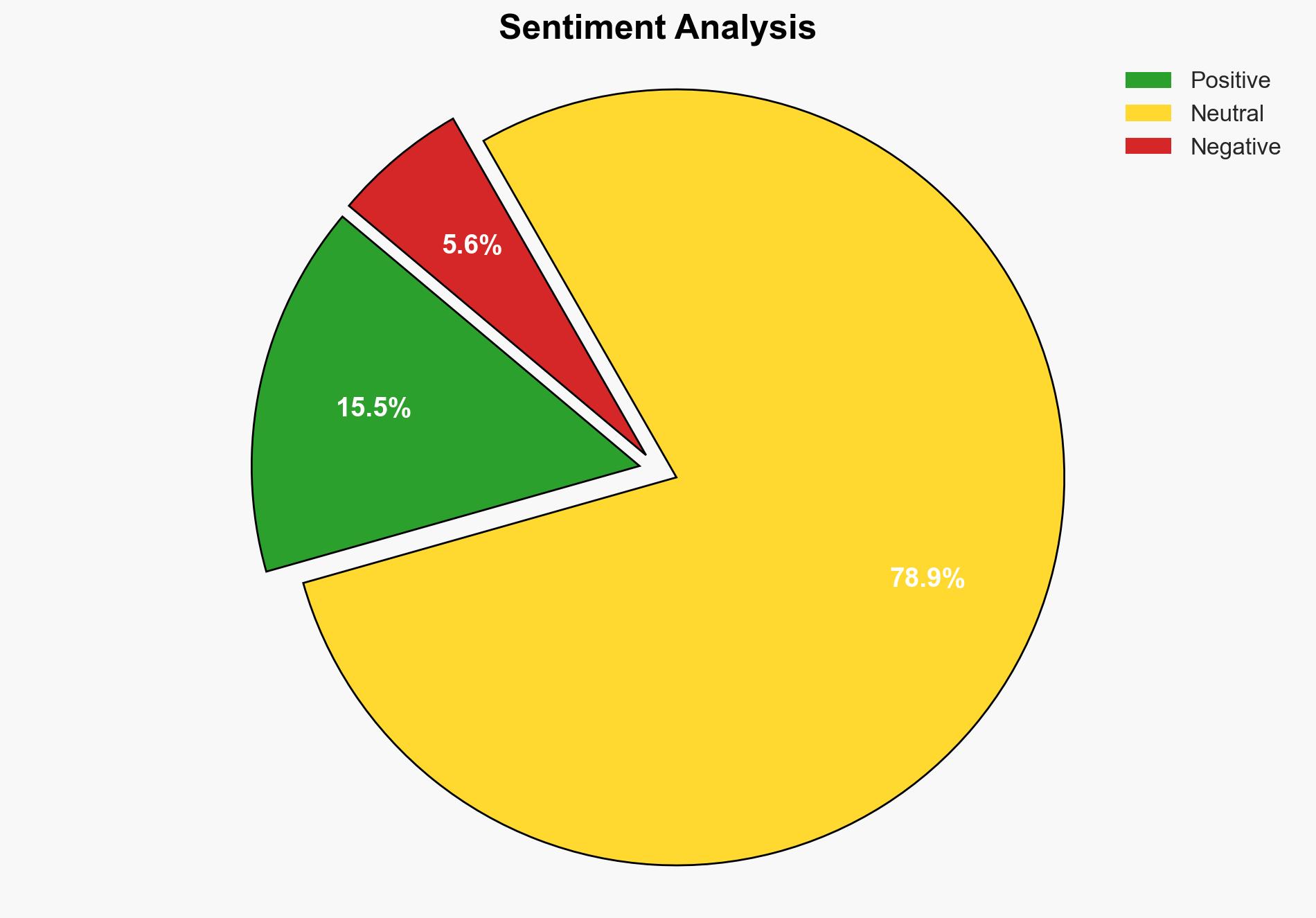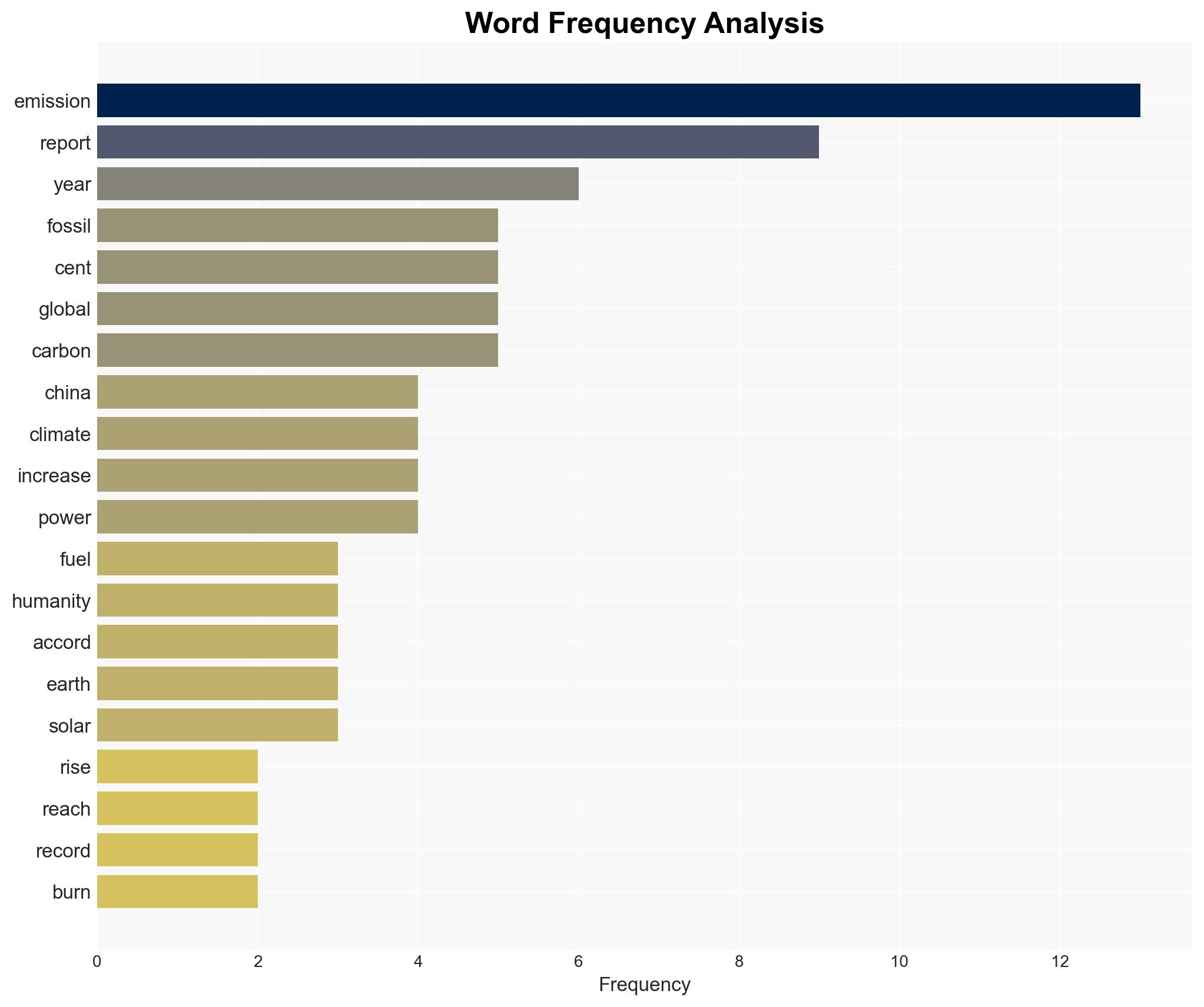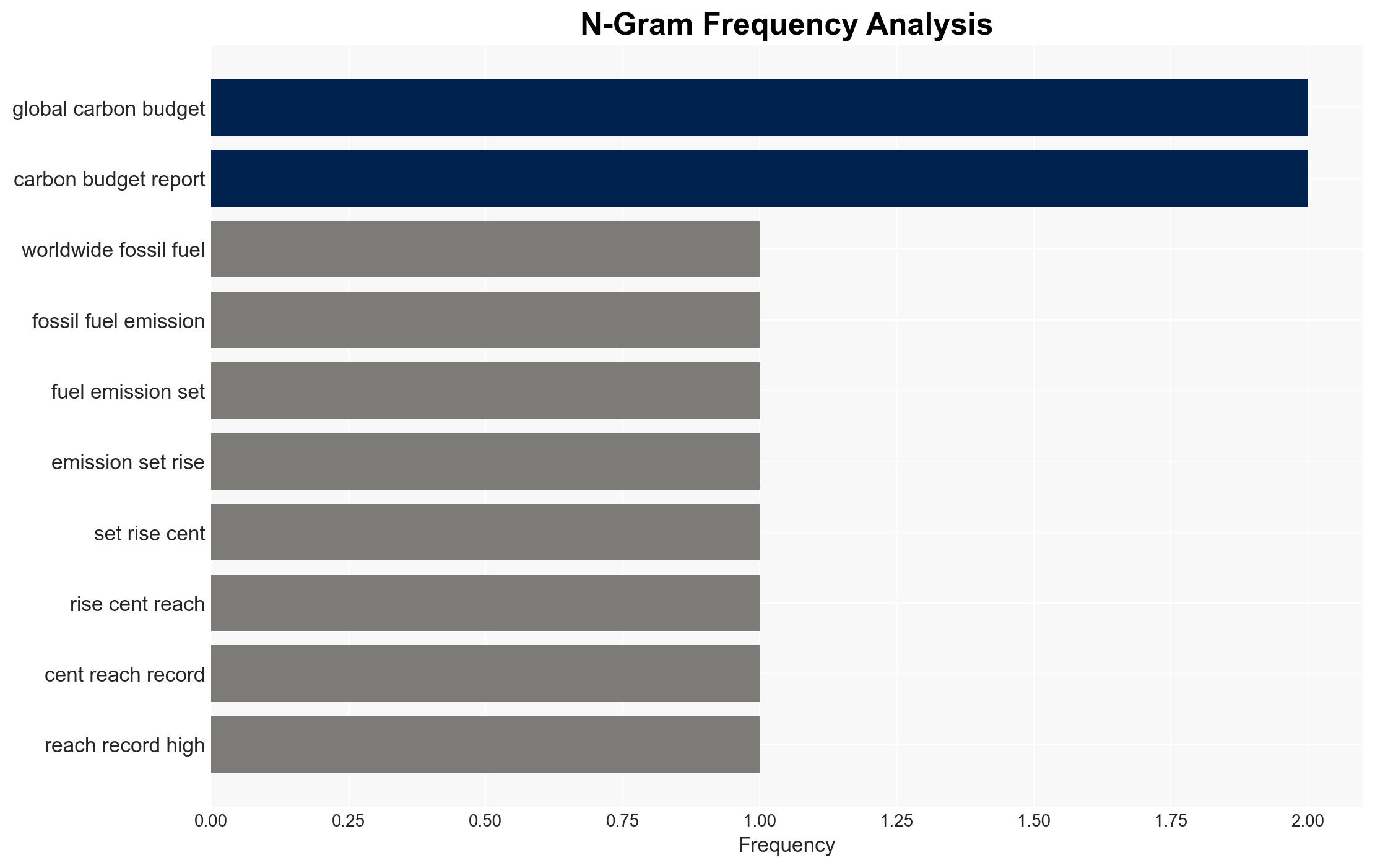Fossil fuel emissions rise again but China’s are levelling off – New Scientist
Published on: 2025-11-13
AI-powered OSINT brief from verified open sources. Automated NLP signal extraction with human verification. See our Methodology and Why WorldWideWatchers.
Intelligence Report: Fossil fuel emissions rise again but China’s are levelling off – New Scientist
1. BLUF (Bottom Line Up Front)
The global rise in fossil fuel emissions, despite China’s stabilization, poses a significant challenge to climate change mitigation efforts. The most supported hypothesis is that China’s leveling emissions are due to structural changes in its energy sector, but global emissions will continue to rise without significant policy interventions. Confidence Level: Moderate. Recommended action includes enhancing international cooperation on renewable energy adoption and implementing stricter emission regulations globally.
2. Competing Hypotheses
Hypothesis 1: China’s emissions are stabilizing due to a genuine shift towards renewable energy and structural changes in its energy sector. This could be indicative of a potential global trend if other nations follow suit.
Hypothesis 2: China’s emissions leveling is temporary and primarily due to short-term factors such as economic slowdowns or temporary policy measures, and emissions could rise again as these factors change.
Hypothesis 1 is more likely given the reported structural changes in China’s electricity system and significant investments in solar and wind power. However, the uncertainty remains due to potential economic fluctuations and policy reversals.
3. Key Assumptions and Red Flags
Assumptions: The data from the Global Carbon Budget report is accurate and reflects current trends. China’s reported investments in renewable energy are effective and sustained.
Red Flags: Potential bias in reporting from sources with vested interests in renewable energy. Lack of transparency in China’s actual emission data and policy implementation.
4. Implications and Strategic Risks
The continued rise in global emissions heightens the risk of failing to meet the Paris Agreement targets, leading to severe climate impacts. Political tensions may escalate as nations face pressure to reduce emissions. Economically, countries reliant on fossil fuels may experience instability. Cyber and informational risks could increase as nations compete for technological dominance in renewable energy.
5. Recommendations and Outlook
- Enhance international collaboration on renewable energy technology sharing and financing.
- Implement stricter global emission regulations and incentivize carbon-neutral technologies.
- Best-case scenario: Global emissions stabilize as more countries adopt renewable energy, aligning with Paris Agreement targets.
- Worst-case scenario: Emissions continue to rise, leading to catastrophic climate impacts and geopolitical instability.
- Most-likely scenario: Emissions rise at a slower rate, with significant regional disparities in emission trends and policy effectiveness.
6. Key Individuals and Entities
Corinne Le Quéré, University of East Anglia, UK – Contributor to the Global Carbon Budget report.
Pierre Friedlingstein, University of Exeter, UK – Report author.
António Guterres, United Nations Secretary-General – Advocate for emission reduction at COP climate summits.
7. Thematic Tags
Regional Focus: Global, China, India
Structured Analytic Techniques Applied
- Causal Layered Analysis (CLA): Analyze events across surface happenings, systems, worldviews, and myths.
- Cross-Impact Simulation: Model ripple effects across neighboring states, conflicts, or economic dependencies.
- Scenario Generation: Explore divergent futures under varying assumptions to identify plausible paths.
Explore more:
Regional Focus Briefs ·
Daily Summary ·
Methodology





